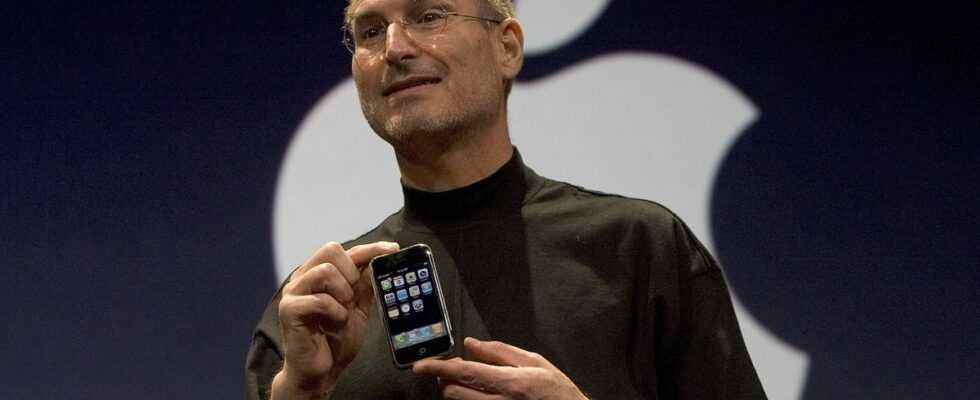Well anchored in adolescence from the top of its 15 years of existence, the iPhone continues despite everything to reveal its secrets. In 2007-2008, the popularity of the smartphone took everyone by surprise, even within Apple.
The iPhone is 15 years old. On June 29, 2007 very precisely, Steve Jobs went on stage to present this product, which was going to upset the mobile industry. If today each burst of the sector is scrutinized very, very closely, at the time, the executives of Apple were unaware of the extent that their invention would take. In a survey conducted on the occasion of the anniversary of the iPhone, journalist Joanna Stern of wall street journal unearthed a few anecdotes that illustrate how much Apple’s smartphone took teams by surprise.
$450 in “Smurfberry”
One morning in 2008, Phillip Shoemaker, the App Store’s development manager at the time, saw a $450 debit on his bank statement in favor of Apple, his own employer. After a quick investigation, the culprit is found: it is his own daughter who, glued for weeks to the game The Smurfs’ Villagespent hundreds of dollars on “smurf berries”, the in-game currency. her dad’s credit card thanks to the iPhone she had in her hands.
Steve Jobs, January 9, 2007, presenting the iPhone during the Macworld exhibition – © David Paul Morris/Getty
This event, combined with several complaints about hidden purchases within certain applications, prompted Apple to create the “Mylie Rule”, which strictly regulates the development practices of applications intended for young people. Later, this rule would evolve to require the use of a password during any purchase within an app.
The beginnings of addiction
Apple’s application store has, more generally, surprised many company executives. Formalized in 2008 (the first iPhone was released without), the App Store is growing at an unexpected speed. At launch, ambitions are measured, according to Greg Joswiak, Apple’s marketing manager. “We thought we had around fifty apps, that would have been a good start.“, he details before adding: “We got 500“.
A year later, 25,000 apps per week are sent to Apple for validation. Among them, a “heater” application which overloads the iPhone’s processor in order to warm up your fingers. Philip Shoemaker, who at the time held a meeting every Friday to review apps, also remembers an app named psychology (in homage to the Alfred Hitchcock classic) which only displayed a knife on the screen and made noise when the iPhone was shaken like a real knife.
Even within Apple teams, the unprecedented popularity of the iPhone is surprising. “We just thought it would be something fun and easy to use… We didn’t think it would become the center of your life“, admits Tony Fadell, former manager at Apple. “Everyone has their head down on their phone, crosses the street not looking where they’re going… I didn’t expect this to happen“, even regrets Philip Shoemaker. 15 years later, this subject is taken much more seriously, as illustrated by the endless debates on smartphone addiction.
